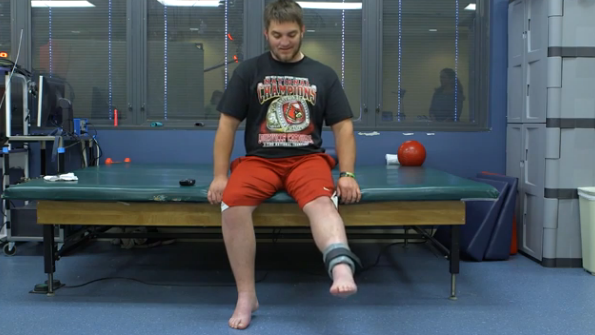New Spinal Cord Stimulation Therapy Gives 4 Paralyzed Men Their Limb Function Back

Paralysis is a devastating diagnosis for anyone. It is completely life altering and involves a severe loss of independence, as well as emotional and physical distress. A group of scientists have made a breakthrough discovery in the way we understand paralysis and are giving hope to the 1.2 million Americans who are paralyzed on their lower limbs. The experiment involves stimulation of the spinal cord and so far has a perfect track record of success.
After years of being paralyzed from the waist down, all four participants who underwent the experimental spinal stimulation were able to gain some voluntary movements in their legs. The results astonished both scientist and the participants, and shows that perhaps paralysis does not have to be a life sentence of immobility but can be improved with the combination of new technology and physical training.
The study was funded by the Christopher and Dana Reeves Foundation and was conducted by a team of researchers from the University of Louisville and the University of California, Los Angeles. It uses technology that was originally developed to suppress back pain but is now believed to one day dramatically transform the lives of both those afflicted by paralysis. The therapy involves coursing an electrical current through the four subject’s spines. According to USA Today, through doing this the team has succeeded in "dialing up" signals between the brain and the legs that were believed to have been completely lost.
Science has known that the spinal cord is able to take over action on its own without the help from the brain. This is evidenced in how quickly we are able to gain our footing when we trip, or in the curious phenomenon of chickens being able to run around without their heads. However, it is now known that these signals from the spinal cord to the brain can be quite weak. In the treatment, electrodes are surgically implanted on the participants’ spinal cord and then electrically stimulated. Each of the participants, some of whom had been paralyzed for up to four years, were able to voluntarily flex their toes, ankles, and knees when the stimulator was active. Their movements were enhanced when combined with physical rehabilitation. Eventually, all four men were able to lift their legs, flex their ankles, and support their own weight — but only when the technology was turned on. What was most surprising is that all four men were able to regain bladder and bowel control, sexual function, and the ability to regulate their blood pressure and body temperature, even when the stimulation device was not running.
The treatment also worked on patients that had partial and complete motor and sensory paralysis, meaning that even those who had absolutely no movement or feeling in their lower limbs were able to benefit from the therapy. Science had previously believed that you needed some of the sensory pathways for the therapy to be effective.
The experiment has proved to be an emotional journey for the participants and their families. “At the age of 22, my doctors were telling me, ‘Here’s a wheelchair, get used to it.' [Now] I feel like I’m better than I was. I don’t feel like I’m going backwards anymore. … I can pursue something in life,” explained Kent Stephenson, a participant who was paralyzed from the waist down due to a motorbike accident, to USA today. “It was unreal. I’d always been told I’d never do that again. My mom busted into tears. I was kind of crying too,” Stephenson continued.
V. Reggie Edgerton, the researcher responsible for developing this new approach to spinal injury rehabilitation explained how it is revolutionizing the way science approaches spinal cord injuries. “This is a wakeup-call for how we see motor complete spinal cord injury. We don’t have to necessarily rely on regrowth of nerves in order to regain function. The fact that we’ve observed this in all four patients suggests that this is actually a common phenomenon in those with complete paralysis,” Edgerton said in a recent press release.
In future studies, the team wants to test their technology on those who have suffered paralysis in their upper limbs. It is also hoped that the technology will be able to be used through the skin to eliminate the need for surgery. Although at the moment the new treatment is costly and time-consuming, it is believed that it can be further developed and made accessible for the public.
Source: Angeli CA, Edgerton VR, Gerasimenko YP, Harkema SJ. Altering spinal cord excitability enables voluntary movements after chronic complete paralysis in humans. Brain: A Journal of Neurology. 2014.



























